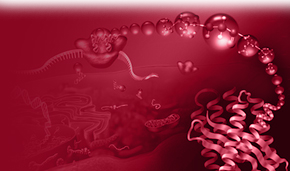|
|

|
|
Science Sparks @ ACTREC
|
 6 January 2020 6 January 2020
|
Vol. No. 9; Issue No. 404
|
|
|
Publications
|
|
1. Murthy V, Maitre P, Bhatia J, Kannan S, Krishnatry R, Prakash G, Bakshi G, Pal M, Menon S, Mahantshetty U (2020). Late toxicity and quality of life with prostate only or whole pelvic radiation therapy in high risk prostate cancer (POP-RT): A randomised trial. Radiotherapy and Oncology. 145: 71-80.
2. Karmakar S, Murthy V (2020). Dose-escalation of radiation may improve out-comes of squamous cell carcinoma of bladder. Clinical and Translational Radiation Oncology. 20: 51.
3. Acharya S, Dutta S, Bose K (2020). A distinct concerted mechanism of structural dynamism defines activity of human serine protease HtrA3. Biochemical Journal.
4. Kalra B, Kannan S, Gupta T (2020). Optimal adjuvant therapy in elderly glioblastoma: results from a systematic review and network meta-analysis. Journal of Neurooncology.
5. Sharda A, Rashid M, Shah SG, Sharma AK, Singh SR, Gera P, CM Krishna, Gupta S (2020). Elevated HDAC activity and altered histone phospho-acetylation confer acquired radio-resistant phenotype to breast cancer cells. Clinical Epigenetics. 12(1): 4.
6. Mahajan A, Vaidya T, Gupta A, Rane S, Gupta S (2019). Artificial intelligence in healthcare in developing nations: The beginning of a transformative journey. Cancer Research, Statistics and Treatment. 2(2): 182-9.
7. Jain H, Thorat J, Sengar M, Dubey A (2019). Ponatinib: A drug review. Cancer Research, Statistics and Treatment. 2(2): 190-6.
8. Shaikh S, Moiyadi A (2019). Intraventricular tumors - A mixed bag. Cancer Research Statistics and Treatment 2(2): 245-6.
9. Talreja VT, Noronha V, Patil VM, Joshi A, Prabhash K (2019). Desperate times, desperate measures: Low-dose nivolumab-induced remission in relapsed NSCLC. Cancer Research, Statistics and Treatment. 2: 266-7.
10. Abraham G, Menon N, Patil VM, Joshi A, Prabhash K (2019). The efficacy of low-dose immunotherapy in head-and-neck cancer. Cancer Research, Statistics and Treatment.2: 268-9.
11. Chavan PD, Bhat VG, Poladia PP, Tiwari MR, Naresh C (2019). Reduction in sample rejections at the preanalytical phase - Impact of training in a tertiary care oncology center. Journal of Laboratory Physicians. 11(3): 229-233.
|
|
|
|
|
Interesting Reads
|
|
Anzalone AV, Randolph PB, Davis JR, Sousa AA, Koblan LW, Levy JM, Chen PJ, Wilson C, Newby GA, Raguram A, Liu DR. Search-and-replace genome editing without double-strand breaks or donor DNA. Nature. 576(7785): 149-157, 2019.
|
|
|
Legends of Science
|

|
Raghunath Anant Mashelkar
Raghunath Mashelkar, also known as Ramesh Mashelkar was born in a village Mashel in Goa and brought up in Maharashtra. Dr Mashelkar was the Director of NCL for 6 years. He transformed Council of Scientific and Industrial Research (CSIR), a network of 38 laboratories, wherein he served as its Director General, for over 11 years. Led by Mashelkar, CSIR successfully fought the battle of revocation of the US patent on wound healing properties of turmeric, claiming that this was India's traditional knowledge and therefore not novel. This led to the creation of India's Traditional Knowledge Digital Library, which helped in prevention of the grant of wrong patents on traditional knowledge. He has received honorary doctorates from 42 global universities. He was the President of Indian National Science Academy. In 1998, he was elected as Fellow of Royal Society of London. The President of India honoured Dr Mashelkar with Padma Vibhushan (2014), Padma Bhushan (2000) and Padma Shri (1991). He has been propagating a culture of innovation and balanced intellectual property rights regime in India for over a decade.
|
|
| |

|
Satyendra Nath Bose
Satyendra Bose was an Indian physicist. He specialised in theoretical physics. He was known for his work on Quantum Mechanics in the early 1920s, which provided the foundation for Bose–Einstein statistics and the theory of the Bose–Einstein condensate. He was awarded the Padma Vibhushan in 1954 by the Government of India. In 1986, the S.N. Bose National Centre for Basic Sciences was established. He also did some research in biotechnology, zoology, anthropology, and other sciences. Bose set up X-ray crystallography laboratory in which there were laboratories for X-ray spectroscopy, X-ray diffraction, magnetic properties of matter, optical spectroscopy etc. Bosons, a class of elementary subatomic particles in particle physics were named after Satyendra Nath Bose to commemorate his contributions to science.
|
|
| |
|
|
|
|
Do You Know?
In 1958, Roy Hertz and Min Chiu Li demonstrated that methotrexate alone can cure choriocarcinoma, the first solid tumor in humans to be cured by drug therapy.
|

|
|
|
Cancer News
|
| |
|
|
| |
|
AI shows promise for breast cancer screening
|
|
01 January 2020, Nature
|
|
Mammograms for 25,856 women in the United Kingdom and 3,097 women in the United States were used to train the AI system. The system was then used to identify the presence of breast cancer in mammograms of women who were known to have had either biopsy-proven breast cancer or normal follow-up imaging results at least 365 days later…
|
|
|
| |
|
|
| |
|
|
© 2020 Advanced Centre for Treatment, Research and Education in Cancer (ACTREC)
|
|
